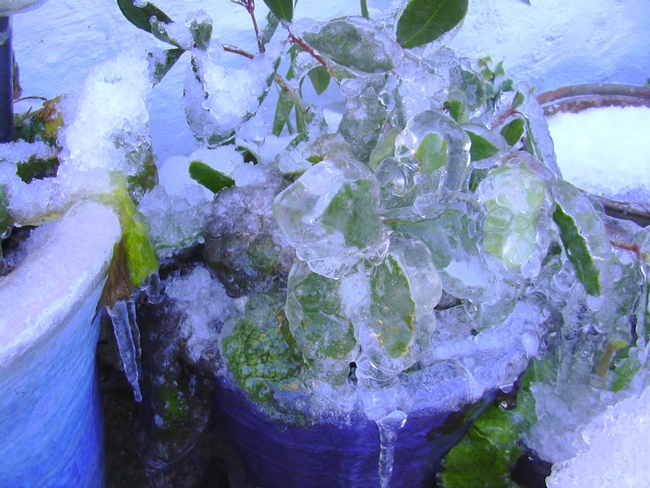Here are seven tips on how to protect your plants from freezing temperatures in California:
- Water your plants. Make sure your plants (not succulents) are hydrated before a freeze. Water the soil around the base of the plant, this will help to insulate the plant and keep it from freezing.
- Cover your plants. Use blankets, fitted bed sheets, or frost cloths to cover your vulnerable plants. Make sure the cover reaches all the way to the ground and is securely fastened to prevent cold air from seeping in. Do not use plastic covers, as they can trap moisture and damage the plant. Make sure to remove the covering when the temperature rises.
- Add warmth for your plants. Use incandescent miniature lights (not the LED type) to provide warmth and raise the temperature around your plants. Position a 100–150 watt light in the center of the tree and cover the plant with a sheet.
- Bring potted plants indoors. If you have potted plants, move them to a sheltered area (ie. Porch, indoors, under an awning), when temperatures are expected to drop. If possible, cluster potted plants close together in a sheltered spot close to the house. If plants are brought indoors, place them near a window that gets sunlight.
- Mulch your plants. Apply a layer of mulch around the base of your plants. This will help to insulate the roots and keep the soil warm.
- Prune your plants. Prune any dead or damaged branches from your plants before a freeze. This will help to prevent further damage from occurring.
- Monitor the weather. Stay up-to-date on the latest weather forecasts and take action if freezing temperatures are expected. If possible, move your plants to a warmer location or cover them before the freeze sets in.
It's important to note that different plants have different levels of cold tolerance. Some plants are more susceptible to freezing temperatures than others. If you're unsure about how to protect a particular plant, consult with your local UC Master Gardener Program for advice, mg.ucanr.edu/FindUs.
By taking these steps to protect your plants from freezing temperatures, you can help ensure that they stay healthy and vibrant year-round. With a little extra care, you can keep your garden looking beautiful no matter what the weather brings. Stay warm this week!
Additional Resources:
Frost Protection for Citrus and other Subtropicals (UC ANR publication 8100)
https://anrcatalog.ucanr.edu/pdf/8100.pdf
UC Master Gardener Program of Marin County, Problems, Extreme Conditions – Frost
https://marinmg.ucanr.edu/PROBLEMS/EXTREME_CONDITIONS/Frost_853/
Attached Images:
